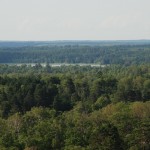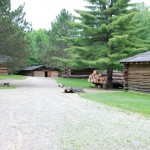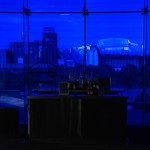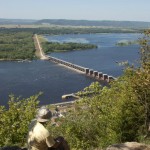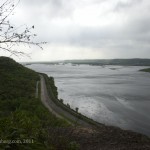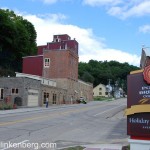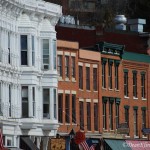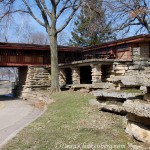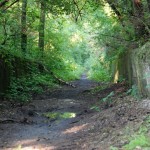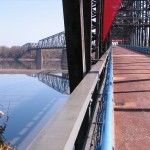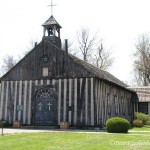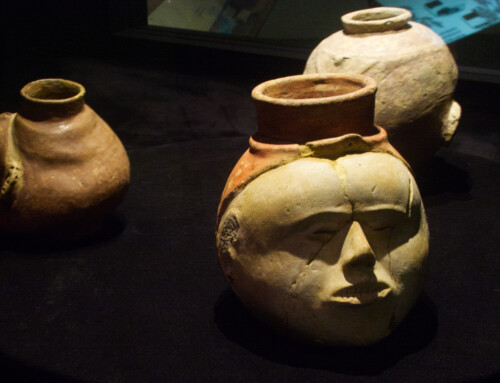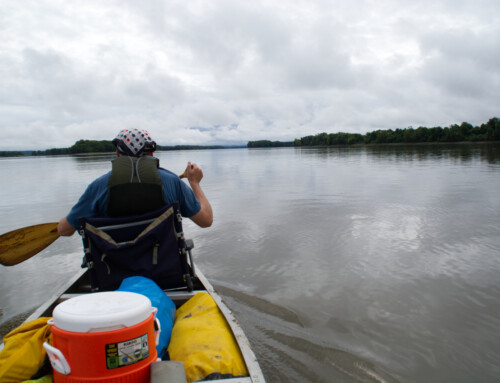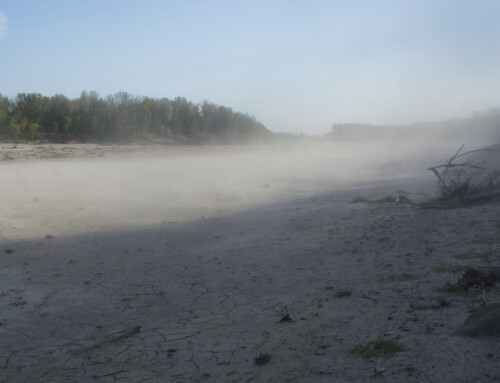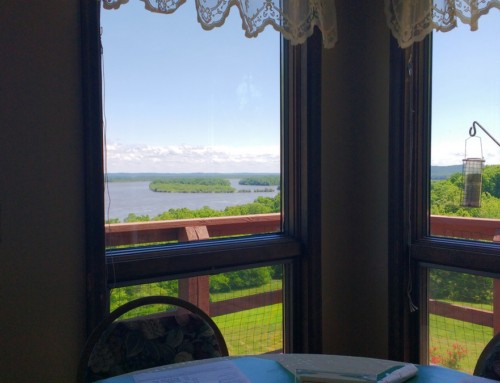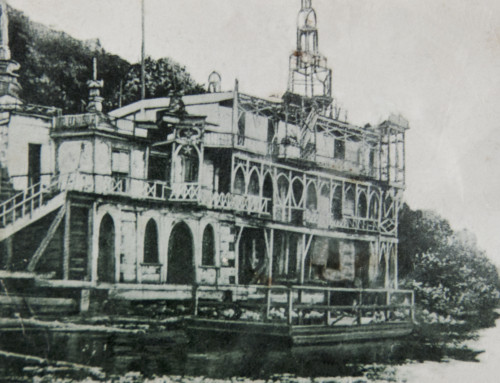The folks at Rand McNally and USA Today recently published a list of must-see attractions for a road trip along the Great River Road. Their choices are not only conventional but, frankly, something that could have been done by anyone with a computer and Internet access (or a brochure from the local Chamber of Commerce). I am puzzled at the inclusion of the Lewis and Clark Interpretive Center in Sioux City, Iowa; you’d think someone might have noticed that it is on the Missouri River, not the Mississippi River—at least a four hour detour from the Great River Road. After all, if you want exposure to the Lewis and Clark experience, there’s also a good interpretive center near St. Louis—which is actually on the Great River Road—that also happens to be near the spot where they began their journey.
So, once again, I’m here to help. Here’s my list of places to visit that are not as well known as those on the Rand McNally/USA Today list but that are in the same general area as their picks. These places will give you a sense of the local culture and will actually keep you near the Mississippi River. I know the places along the Upper Mississippi River the best, so that’s mostly what I’ll focus on here, with just a couple of exceptions.
Itasca State Park
Itasca State Park is a good place to start any road trip along the Great River Road. Visiting the spot where the Mississippi River begins is very cool, but the entire park is a special place and worth more than the time it takes to wade into the nascent river for a photo op, which is what most people do. After you walk across the Mississippi River, explore Wilderness Drive at a leisurely pace. Take a short hike on the Bohall Trail through one of the few remaining stands of old growth pine forest; climb the old fire tower for a spectacular perspective on the boreal forest.
Grand Rapids, Minnesota
The Mississippi River cuts through the forest landscape of northern Minnesota. If you’re going to be up here, you may as well spend some time getting to know the forest. In Grand Rapids, there are several places to visit for a full introduction. Visit the Forest History Center for an overview of forest ecology and to tour a replica of a logging camp. Take a tour of the UPM/Blandin Paper Mill. Hike the bog trail at Itasca Community College, then explore the Edge of the Wilderness National Scenic Byway from Grand Rapids to Effie.
Twin Cities
It’s hard to argue against a visit to the Science Center of Minnesota, but don’t stop there. The Twin Cities have so many other places that offer a taste of local culture. Take a self-guided tour of Minneapolis’ Guthrie Theater; it’s free and there are great views of the river. Head to the observation deck of the elaborate, art deco W Hotel formerly known as Foshay’s Tower (or Foshay’s Folly). Wander around the sprawling Minneapolis Farmers Market. Tour the historic Hill House in St. Paul. That should get you started.
Wabasha
The National Eagle Center has a scenic location next to the river and lots of cool things about eagles, as you would expect, but to experience something more unusual, tour the Arrowhead Bluffs Museum,
On the Wisconsin side of the river, sip locally-made cider at the Maiden Rock Cidery and Winery near Stockholm, then, in Alma, tour the Castlerock Museum and enjoy pretty views that don’t require a climb at the Buena Vista Park overlook.
Winona
Don’t bypass Winona. The center of the city’s surprising cultural scene is the Minnesota Marine Art Museum. If you are an architecture fan, take some time to visit the quirky Winona National Bank, Merchant’s Bank (rich with art glass windows), the ornate Watkins Administrative Building, and the stately Church of St. Stanislaus Kostka. (Read about each of these here.)
La Crosse
Grandad Bluff is a worthy choice, probably even more so after it reopens in the spring of 2012 following a major renovation, but the place can get very congested and you’re not supposed to hike around the bluff. In contrast, neighboring Hixon Forest has dozens of miles of trails and several overlooks that are every bit as spectacular, just with a lot fewer people. While you’re in town, take time to visit the Hixon House and Maria Angelorum Chapel at St. Rose Convent.
Potosi
Yes, you should tour the National Brewery Museum but leave time to sample the fine selection of craft beers at the adjacent Potosi Brewery.
Galena
Walk along Main Street, explore the locally-owned shops, then tour the Dowling House (built in 1826) and the West Street Sculpture Garden; leave time for a hike around Caspar Bluff.
Dubuque
I’m a big fan of the National Mississippi River Museum & Aquarium; spend at least two hours exploring it. When you’re done, walk around Eagle Point Park and enjoy the river views and Prairie-style architecture, tour the creepy Old Jail Museum (which was used as a jail from 1856 to 1971!), and gawk at the spectacular Tiffany windows at St. Luke’s United Methodist Church.
Quad Cities
The John Deere Pavilion will be reopening in mid-February (2012) after a major renovation, so you should probably check that out. While you’re in the area, set up a tour of one of the John Deere factories (especially if it is the Harvester Works factory), walk around the post-industrial park on Sylvan Island (Moline), then head to Davenport and tour the River Music Experience.
St. Louis
If you come to my hometown and do nothing other than visit the Arch, I’m going to be very disappointed in you. So, after you ride the cleverly-designed-but-rather-scary elevator to the top of the Arch, walk to the Old Courthouse to see what this city sacrificed to build a world class monument. Hint: it was some 40 square blocks of riverfront buildings. As long as you’re here, take some time to walk across the old Chain of Rocks Bridge, and wander around the historic Soulard neighborhood (the city’s oldest residential area) where you can dine in a Civil War-era building, then enjoy live blues and jazz.
On the Illinois side of the river, the village of Cahokia is the oldest European settlement on the Mississippi River—older than New Orleans. It has a few fine examples of French Colonial architecture, including the Church of the Holy Family. Further north, the Cahokia Mounds State Historic Site preserves a few remnants of a city that peaked culturally and economically some 1000 years ago. It was home to perhaps 20,000 people before it collapsed.
Sainte Genevieve
Wander around the square—it’s especially lovely at night—and tour at least one of the historic houses (if you only have time for one, you can’t go wrong with the Bolduc House). Just two miles east of town, you can get on the river, even if you didn’t bring a boat, thanks to ferry service that connects Sainte Genevieve to Modoc, Illinois. A few miles south of town, the village of Kaskaskia is the only community in Illinois that is west of the Mississippi River. Kaskaskia was the first state capital of Illinois; besides the Liberty Bell of the West, there’s not much to see today thanks to repeated flooding that wiped out the original village.
South of Sainte Genevieve
I don’t know the territory from Memphis south as well as the rest of the river, but I do have a few suggestions. In Memphis, go to Graceland if you really have to—I did—but take some time to explore the rest of the city’s heritage including the Stax Museum of American Soul Music, the National Civil Rights Museum, and Mud Island. As far as ribs go, if you ask around town, I’d be surprised if many residents will pick the Rendezvous as their first choice. I’ll let you know what I think later this spring after I take a weekend trip to Memphis for a barbeque binge.
Just south of Memphis, skip the casinos and head right to Clarksdale for a visit to the famed crossroads where Robert Johnson sold his soul. While you’re there, check out the Delta Blues Museum, then head over to the Ground Zero Blues Club, a place where Morgan Freeman and the other owners are keeping alive the spirit of the old roadhouses.
As far as New Orleans goes, the best idea a national magazine can come up with is to visit the French Quarter? How much thought did that take? Get into the neighborhoods. Find out how the city has been recovering from Hurricane Katrina. Find a local club where residents go for music. Eat at a local restaurant. That’s what I’ll be doing the next time I get there.
Naturally there are many other places around and in between the cities in this list that offer worthwhile reasons to stop and visit—too many to include in this piece. Of course, if y’all owned a Mississippi Valley Traveler guidebook or two, you’d already know this and (so much more!)…
- View from Buena Vista Park; Alma, WI
- Potosi, WI
- Sylvan Island; Moline, IL
© Dean Klinkenberg, 2011
